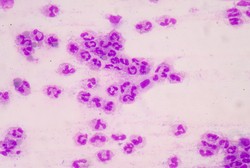Molecular mechanisms of sepsis
Sepsis is a serious medical condition characterised by dysregulated systemic inflammatory responses followed by immunosuppression. There is an urgent need to understand the molecular and cellular mechanisms of sepsis development, a leading cause of death during infection. Estimation is that about 600 000 cases of sepsis and more than 150 000 deaths occur annually in the European Union. The EU-funded MAVS (Role of the mitochondrial anti-viral signalling protein in sepsis) project has investigated how an acute inflammatory response develops during experimental sepsis using mice models. Preliminary data demonstrated an essential role of the novel mitochondrial anti-viral signalling protein (MAVS) in sepsis development. Mice with genetic deficiency of MAVS appeared to be protected against sepsis. The project researcher investigated acute inflammatory response using an experimental sepsis mouse model. The objectives were to study the role of the MAVS protein during experimental bacterial sepsis and to define the interactions of MAVS with the immune-modulatory cytokine interleukin-27 (IL-27). In addition, the team analysed the interactions of MAVS/IL-27 complexes within the blood coagulation cascades during sepsis. The researchers successfully established and maintained the breeding colony of MAVS-deficient mice at the participating institution. The polymicrobial sepsis model was induced by a well-established caecal ligation and puncture procedure. Major results achieved by the project included detailed characterisation of the MAVS-deficient mice using state-of-the-art molecular biology, immunology and imaging techniques. The results of this project provided solid experimental basis for designing novel therapies that could prove effective against life-threatening sepsis. In addition, the project also provided training and enhanced the research career prospects of the participating scientist, providing resources to support his role as an independent investigator.







